Seedream 4.0 vs. Nano Banana: The Battle of Next-Gen AI Art Models
- Seedream 4.0
- Nano Banana
If you’ve been following the AI image generation scene lately, you’ve probably seen two names trending everywhere: Nano Banana and Seedream 4.0. Both are cutting-edge multimodal models, both promise game-changing creative power — but each has its own strengths. So, which one really delivers in real-world scenarios?
Let’s break it down.
Meet the Models
Nano Banana: The “IP Character Master”
Officially known as Gemini 2.5 Flash Image, Nano Banana is Google’s latest, fastest, and most efficient native multimodal model. It was trained from the ground up to process text and images together, which gives it some unique abilities: conversational editing, multi-image mashups, and even reasoning over visual content.
But where it truly shines is character consistency: generate 100 images, and the same character will look like the same person every time. For brands, IP characters, or virtual influencers, Nano Banana is nothing short of a blessing.
Seedream 4.0: The “High-Resolution Aesthetics King”
On the other side is Seedream 4.0, ByteDance’s Doubao·Image Creation Model. Like Nano Banana, it handles text+image inputs for fusion, reference-based generation, and editing. Its two biggest advantages?
- 4K Image Generation — Seedream 4.0 is the first multimodal model to support true 4K outputs, delivering stunning clarity.
- Chinese Prompt Mastery — Its ability to interpret nuanced Chinese input is second to none, making it especially powerful for creators in Chinese-language markets.
So in short: Nano Banana dominates character-driven storytelling, while Seedream 4.0 rules in visual fidelity and language versatility.
Real-World Test #1: Turning People into Anime Figures
For the first test, I wanted to see how each model handled figures — one of Nano Banana’s breakout use cases. My setup: take a real person’s photo, cosplay them as another character, then render them as a two-dimensional anime-style figure.
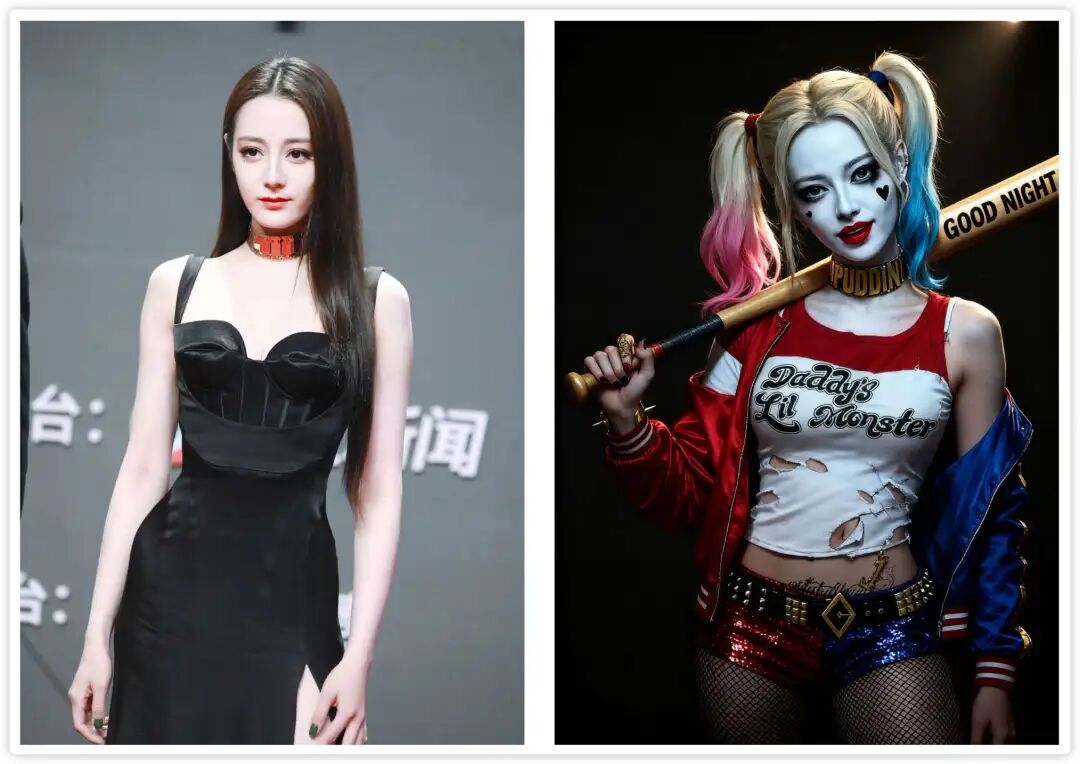
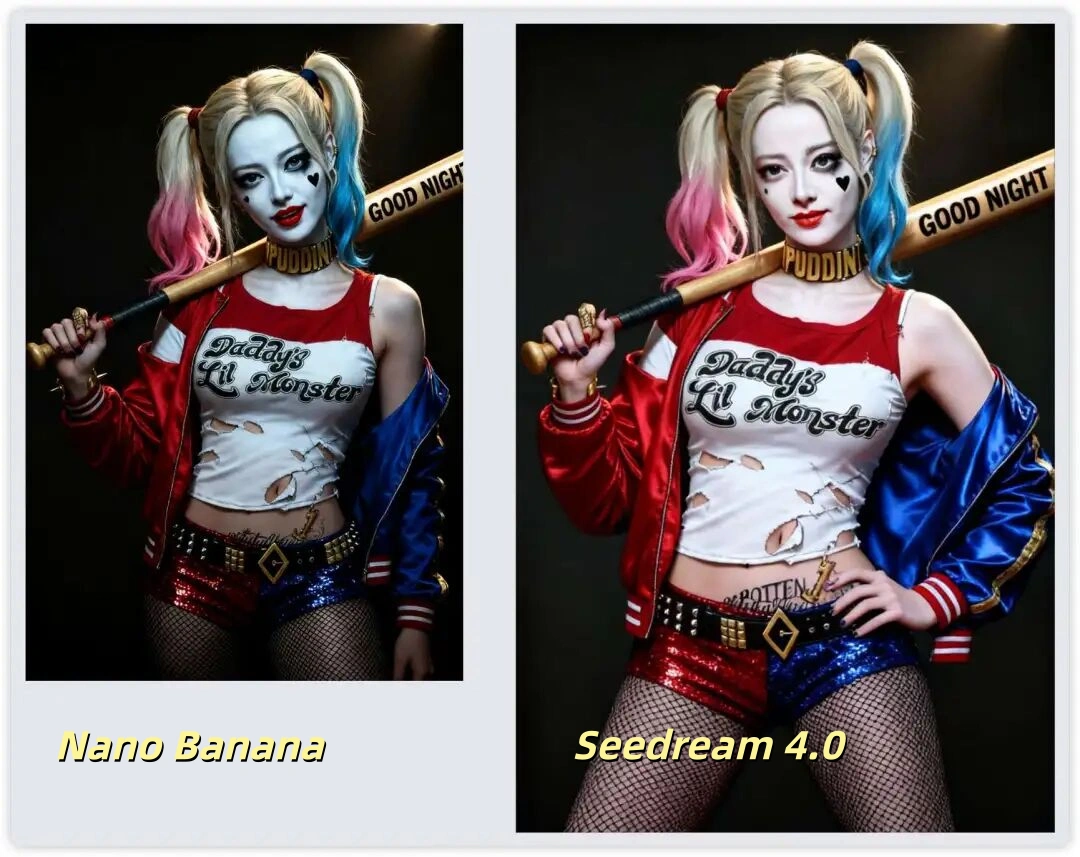
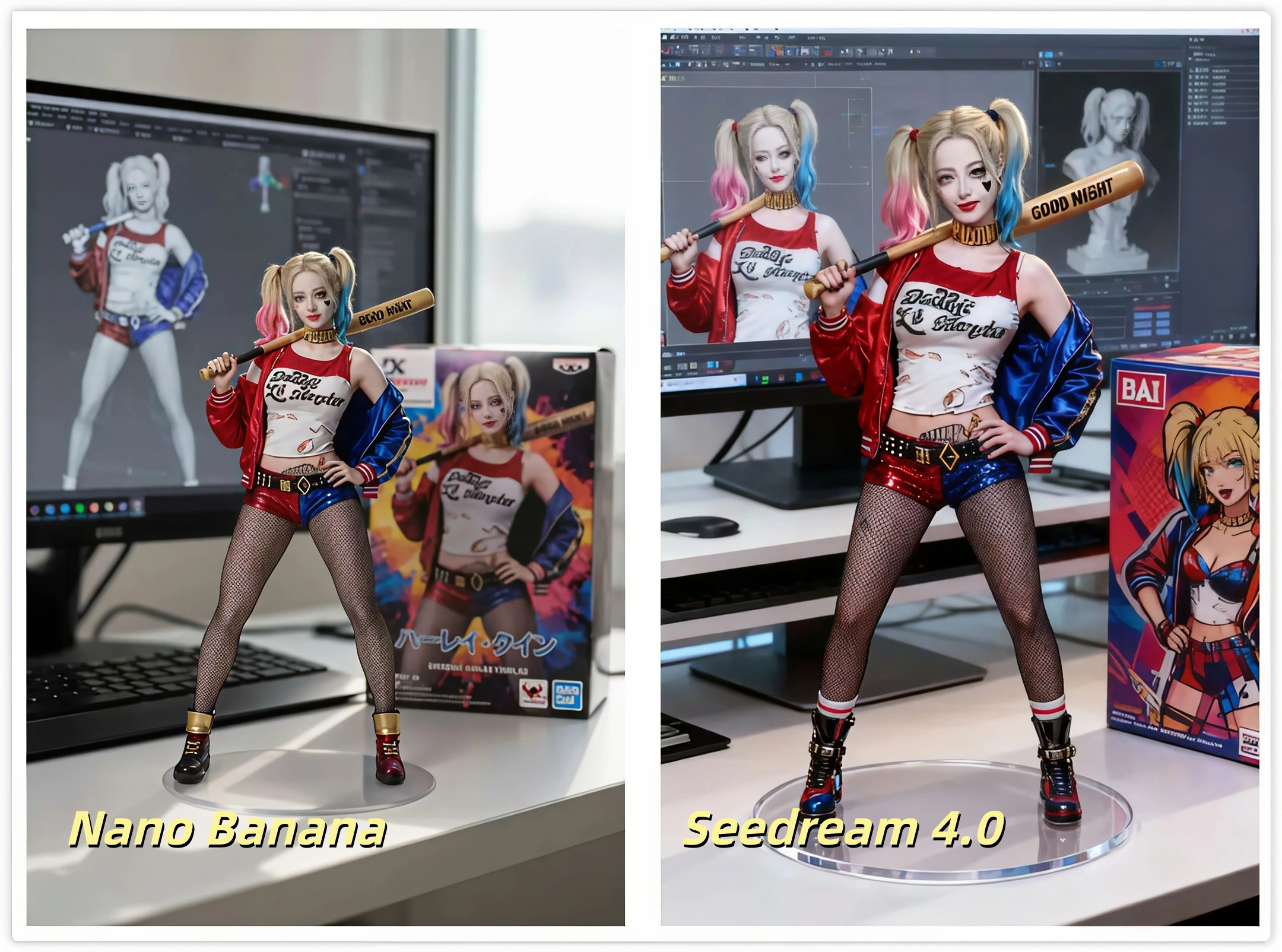
- Seedream 4.0 impressed immediately with higher resolution and a figure that looked more like the real person.
- Both models nailed clothing and props.
- Pose Test: Nano Banana came out on top here, recreating a custom pose more accurately. Seedream 4.0 sometimes distorted the face, even after multiple attempts.
👉 Verdict: Nano Banana wins for pose accuracy, while Seedream 4.0 wins for resolution and likeness.
Real-World Test #2: E-commerce Styling
Next up: e-commerce scenarios. Here, consistency is everything — you want the same model wearing different outfits and accessories across multiple product shots.
Prompt: dress the model in a specific combination of dress, trench coat, shoes, and bag, and have her strut confidently down a Paris street.
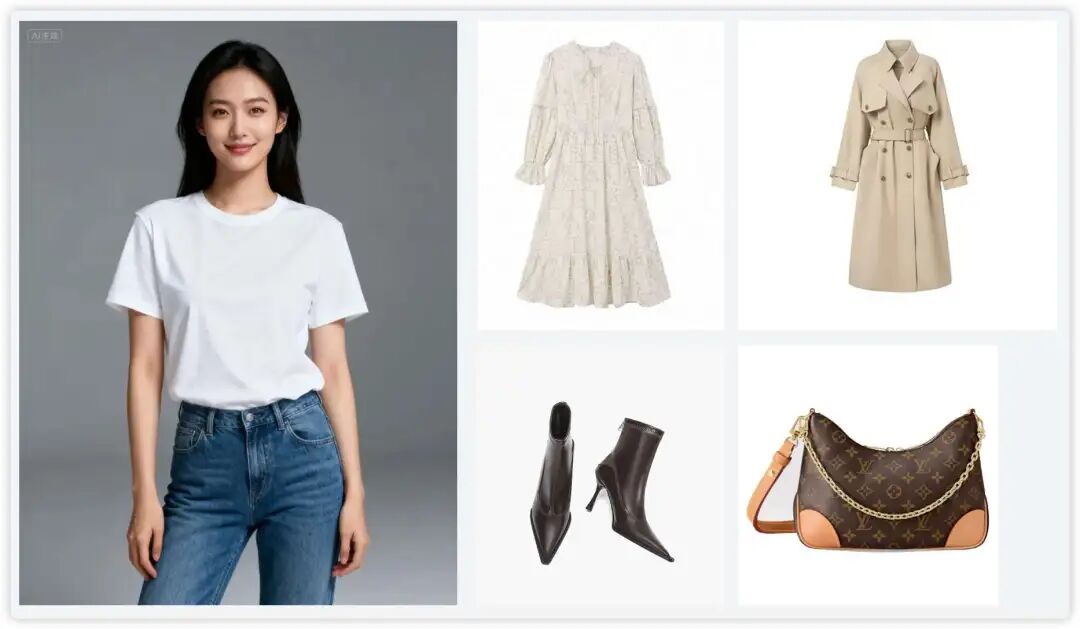
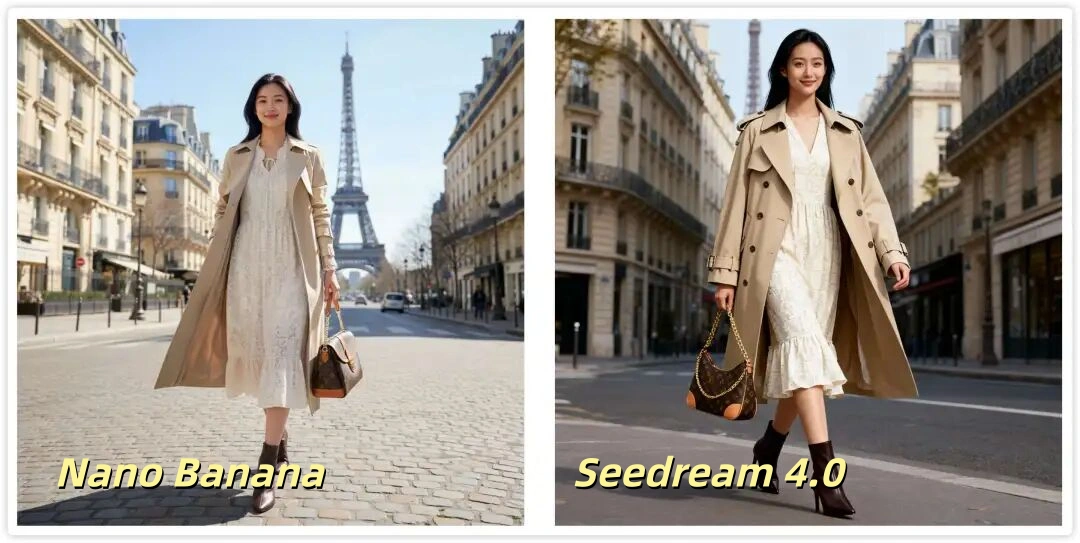
- Seedream 4.0 produced results closer to the original face, with outfits faithfully reproduced. The bag, coat, and shoes looked spot-on.
- Nano Banana got the dress detail right (like the straps), but the face showed slight distortion and the bag morphed into a different design.
Then I asked both models to create eight new looks, matching poses and backgrounds to each style.
- Seedream 4.0 kept identity tighter and scenes more natural.
- Nano Banana slipped a bit here, showing small mismatches.
👉 Verdict: For e-commerce, Seedream 4.0 takes the lead in likeness and outfit faithfulness. But if you want to obsess over garment micro-details, Nano Banana still has its place.
Real-World Test #3: Animal Consistency
Finally, I tested animals. Using a reference photo of a golden retriever, I asked both models to create a series of shots: chasing waves at the beach, sniffing in the forest, napping at home, and playing with its little owner.
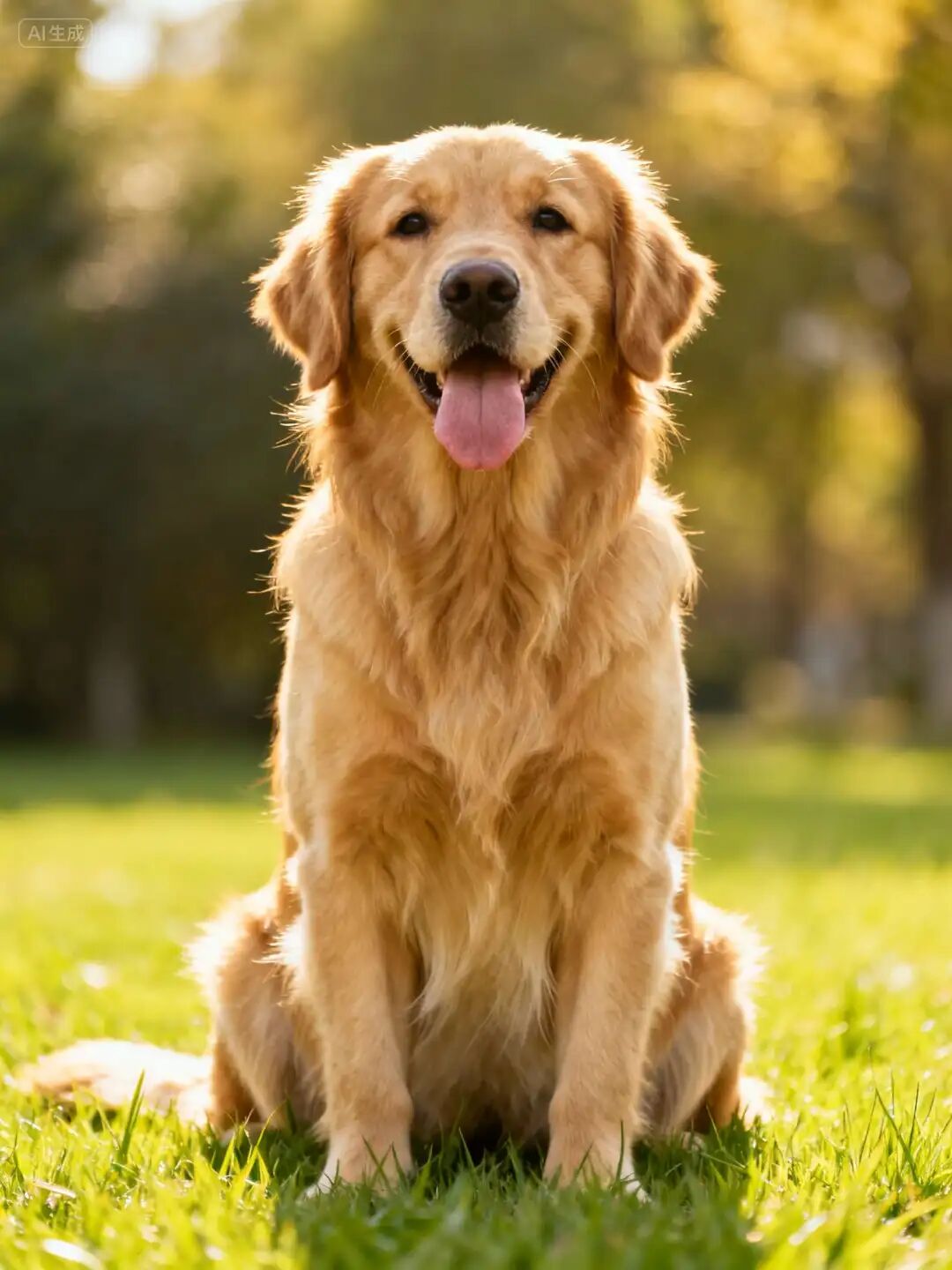
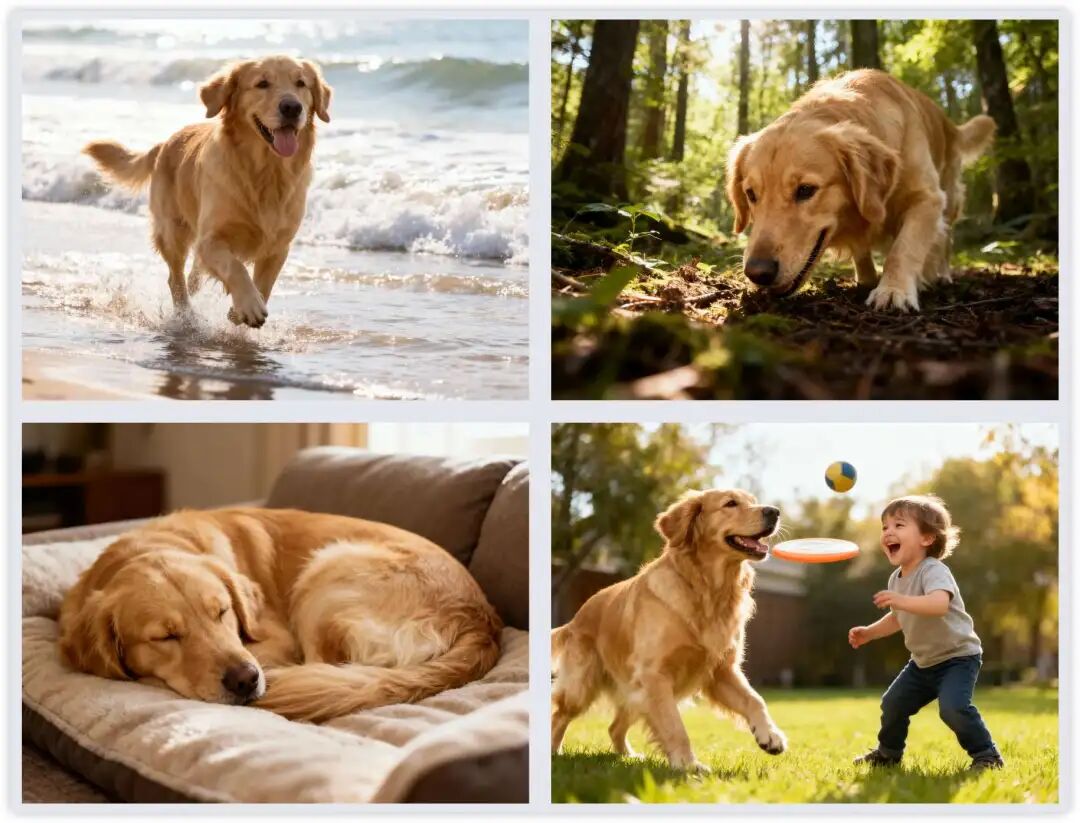
Seedream 4.0
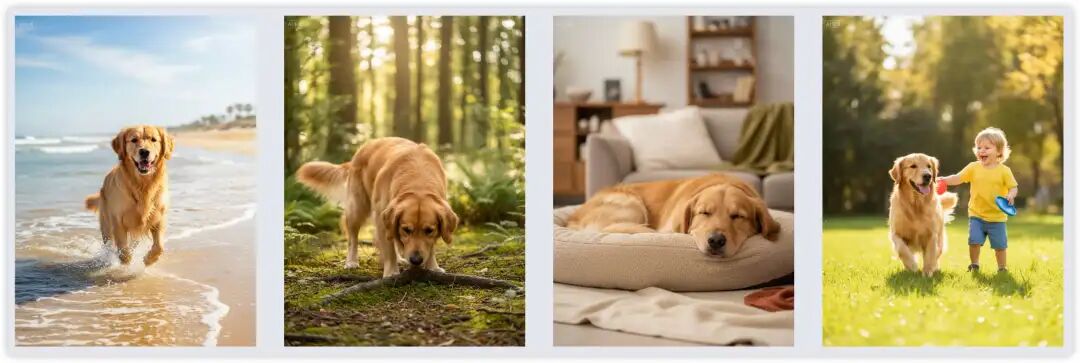
Nano Banana
Both models did great — the dog stayed consistent across scenes with no major flaws. But zoom in, and:
- Seedream 4.0 rendered fur with finer, softer detail.
- Nano Banana was stable, but the textures weren’t quite as refined.
👉 Verdict: Both are solid, but Seedream 4.0 wins for photorealistic fur and detail.
Final Thoughts
After putting both models through three very different real-world tests, here’s how they stack up:
- Nano Banana → Best for IP characters, pose accuracy, and fine control over small details.
- Seedream 4.0 → Best for 4K aesthetics, face likeness, Chinese-language prompts, and overall faithful styling.
The truth is, there’s no one-size-fits-all answer. Each shines in different scenarios. If you’re using a platform like Dreamface , the smartest move is simple: run both, compare, and pick the one that works best for your use case.
Because at the end of the day, the real winner is… whichever model gives you the image you love most.
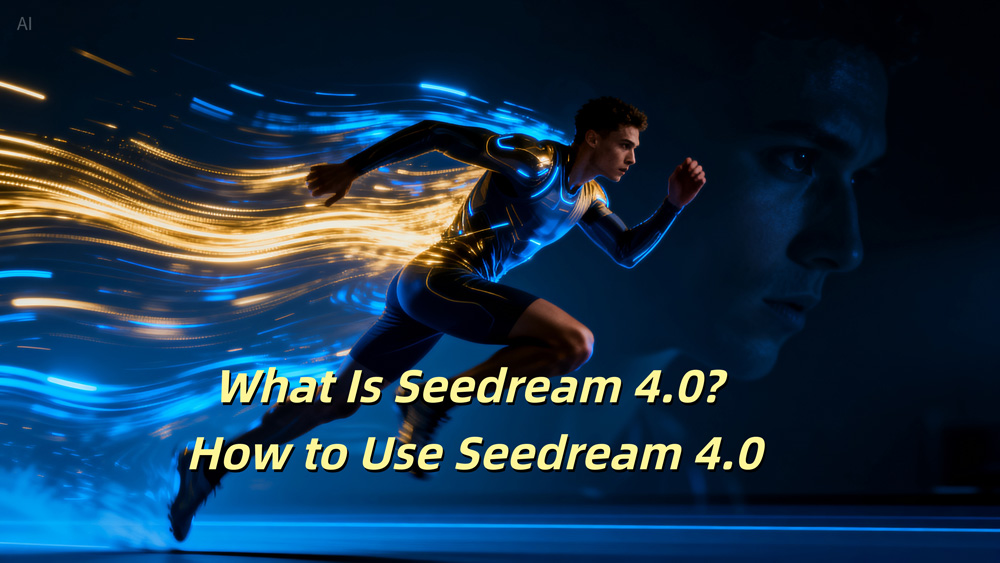
What Is Seedream 4.0? How to Use Seedream 4.0 for Powerful Text-to-Image Creation
Sep 17, 2025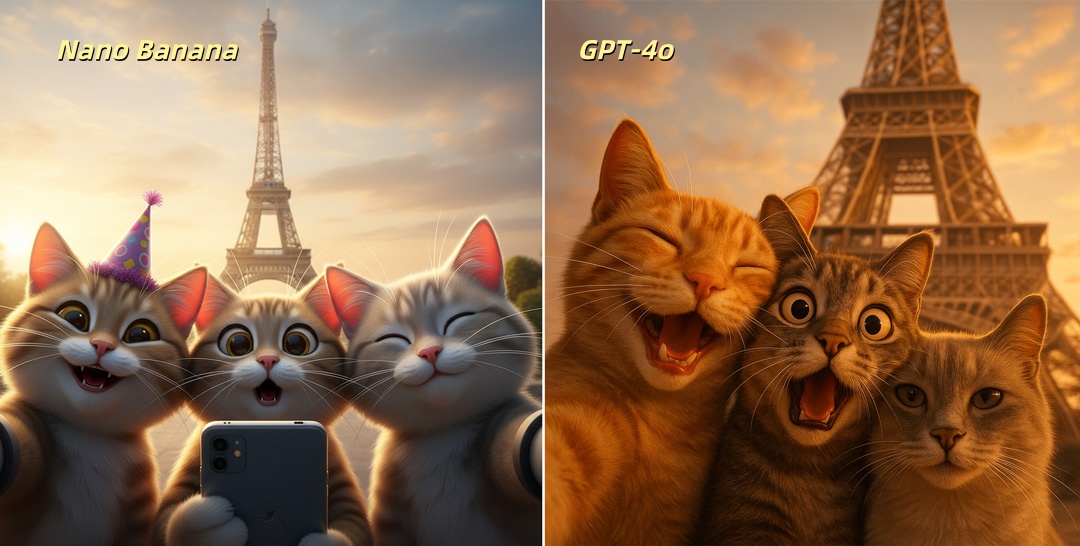
Nano Banana vs GPT-4o: Who Leads the Next Wave of Image Creation?
Sep 16, 2025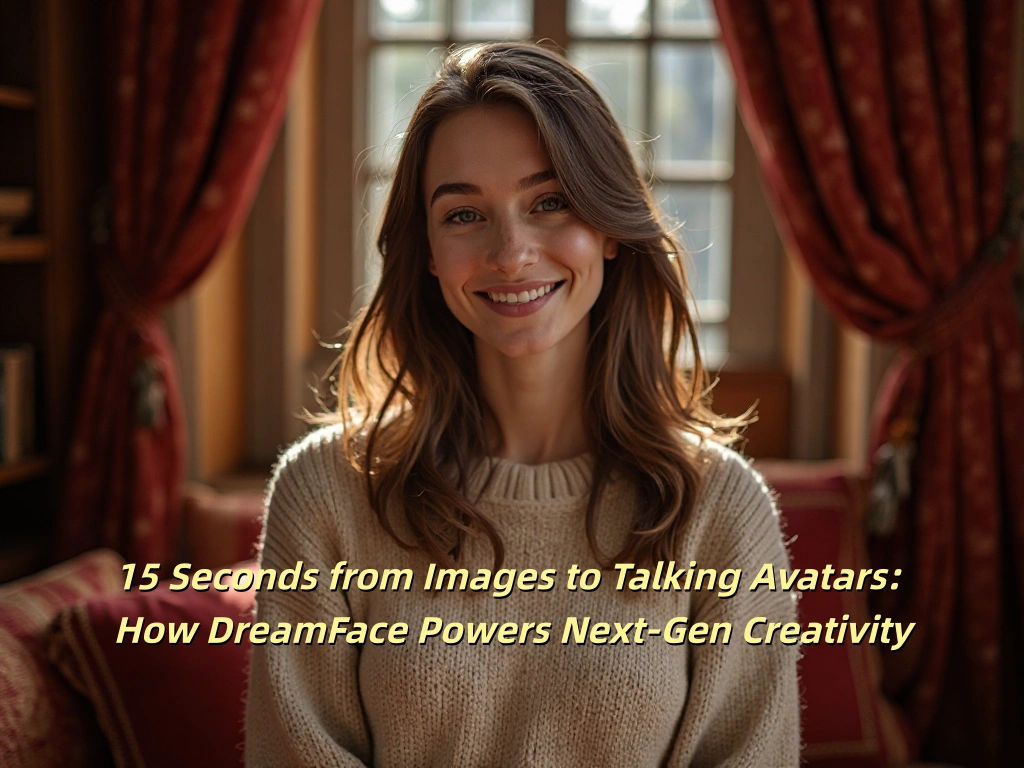
15 Seconds from Images to Talking Avatars: How DreamFace Powers Next-Gen Creativity
Sep 10, 2025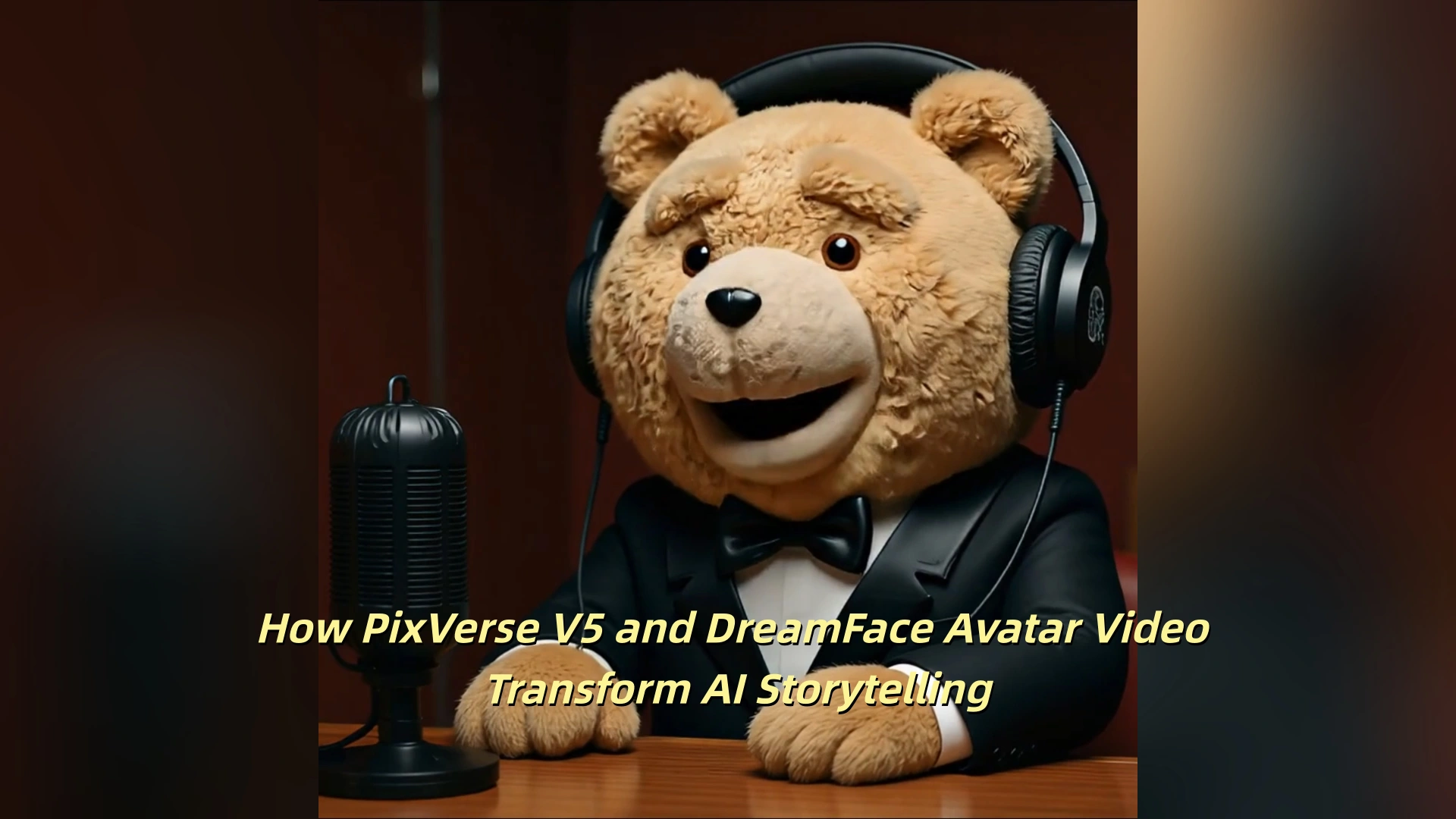
Bringing Avatars to Life: How PixVerse V5 and DreamFace Avatar Video Transform AI Storytelling
Sep 11, 2025

What Is Seedream 4.0? How to Use Seedream 4.0 for Powerful Text-to-Image Creation
Recently, Seedream 4.0 was officially released, marking a major leap forward in AI text-to-image technology. Compared to the 3.x generation, this new release offers faster performance, higher resolution, and a much more versatile creative workflow.
By Elijah 一 Sep 22, 2025- Seedream 4.0
- Text-to-Image

Nano Banana vs GPT-4o: Who Leads the Next Wave of Image Creation?
The frontier of AI image creation is no longer about whether AI can “draw.” It’s about whether AI can understand, adapt, and collaborate with human creativity. Google’s Nano Banana and OpenAI’s GPT-4o represent two distinct approaches.
By Elijah 一 Sep 22, 2025- Nano Banana
- GPT-4o
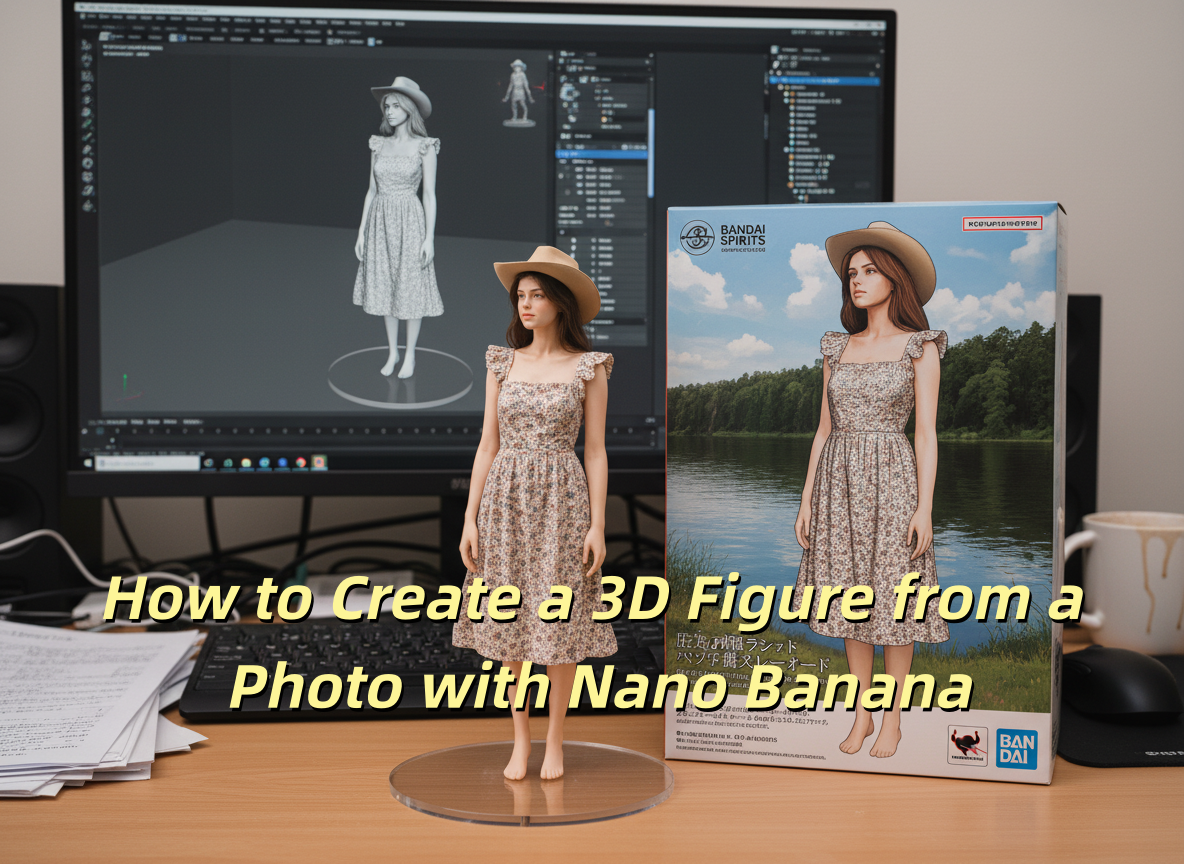
How to Create a 3D Figure from a Photo with Nano Banana
With Nano Banana, you can transform a simple image into a detailed, 3D figurine-style model. Whether you’re looking to turn a portrait into a stylized figurine or create a fully custom 3D model, Nano Banana offers a simple and efficient solution for artists, designers, and enthusiasts alike.
By Elijah 一 Sep 22, 2025- Nano Banana
- AI Image Generator
- X
- Youtube
- Discord
